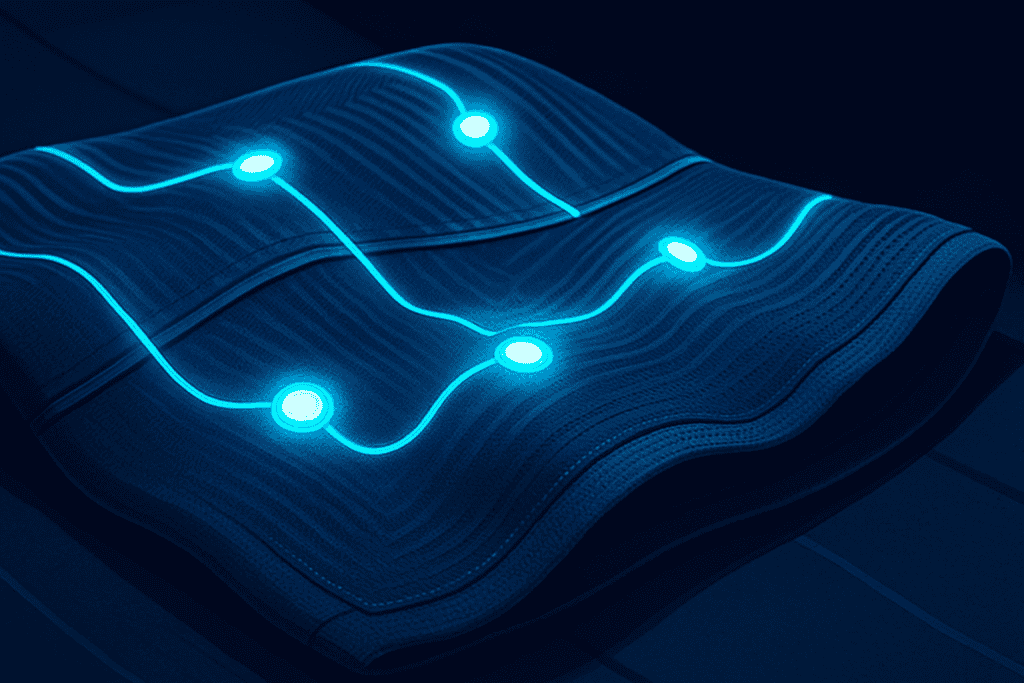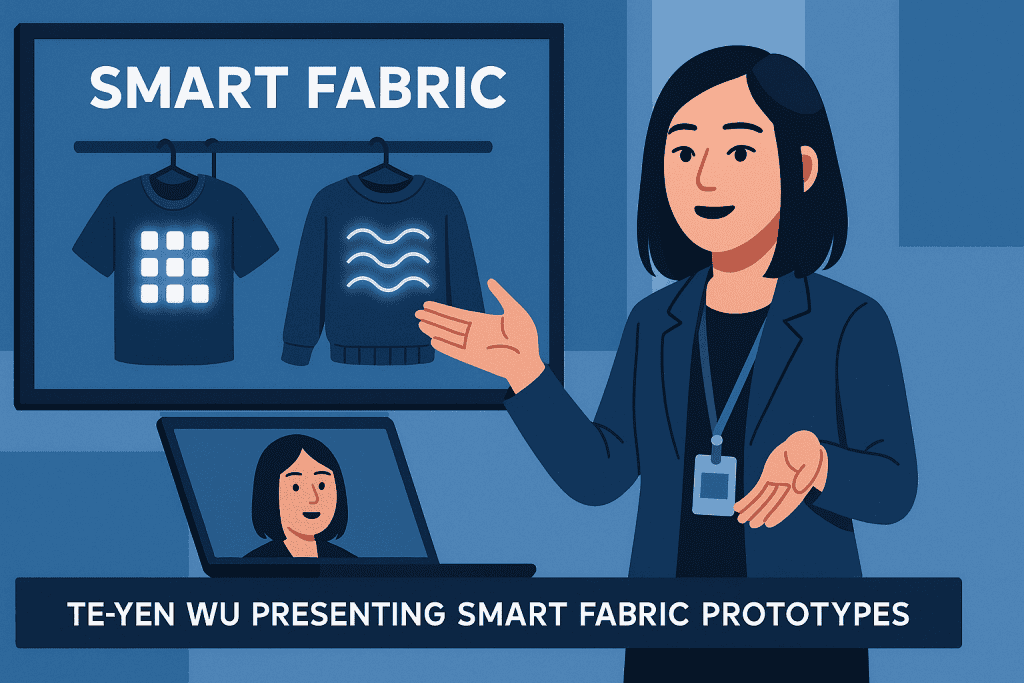Smart Textiles, Smart Clothing, Smart Fabric are no longer just futuristic buzzwords. They represent a groundbreaking shift in how we experience clothing. These intelligent fabrics are equipped with micro-sensors, conductive fibers, and responsive materials that enable garments to do far more than just cover the body. From monitoring vital signs to adjusting to climate conditions, these textiles are bringing digital intelligence into the very weave of fashion. Picture workout gear that offers real-time posture correction or uniforms that detect exposure to hazardous materials and alert the user immediately.
These developments go beyond comfort and style. They’re making waves in healthcare with garments that can monitor heart rhythms or glucose levels, providing early warnings that could save lives. For athletes, smart fabrics analyze muscle activity and fatigue, offering feedback that helps improve performance while reducing injury risk. In extreme work environments, such as construction or military operations, these fabrics provide added layers of safety and situational awareness.
As production scales and costs drop, smart clothing is inching closer to becoming a common part of daily wear. It combines functionality with style, catering to a world that demands both innovation and practicality. This exciting evolution signals a future where the clothes we wear are not only smart but also deeply attuned to our personal needs and lifestyles.
What Happened
Big developments are weaving a new future for Smart Textiles, Smart Clothing, Smart Fabric. Recently, global tech firms and textile innovators have introduced fabrics embedded with flexible sensors that actively respond to the wearer’s body and surroundings. These textiles can measure everything from heart rate and perspiration to movement and environmental changes, opening up vast possibilities across industries. One breakthrough came from a European research initiative that unveiled a multi-sensor fabric capable of detecting body pressure, joint movement, and temperature shifts. The fabric not only collects real-time data but also processes it through embedded circuits, creating smart garments that think while you wear them.
In the fitness world, new adaptive sportswear is setting a high bar by providing athletes with feedback on muscle exertion, posture correction, and even fatigue levels. This allows users to adjust form and avoid injuries during training. At the same time, the healthcare sector is witnessing smart bandages and wound care garments that track healing and identify early signs of infection, which is a critical advantage for hospitals and remote patient care.
What makes these announcements truly game-changing is the leap from experimental design to practical, wearable products. These innovations are not just tech demos. They are fully wearable, washable, and built for real-life use. As these intelligent fabrics enter the commercial space, we are looking at the beginning of a textile revolution that merges technology, wellness, and convenience.

When and Where

Smart Textiles, Smart Clothing, Smart Fabric gained major visibility during the first quarter of 2025, propelled by landmark events like CES 2025 in Las Vegas and TechTextil in Frankfurt. These gatherings served as the perfect stage to reveal how far the technology had come. Brands demonstrated garments embedded with biometric sensors and adaptive materials that could adjust to temperature or movement in real time. The crowd reactions and media coverage confirmed one thing, smart textiles had moved beyond prototypes.
Following these global showcases, regional expos in Asia highlighted scalable production methods and eco-friendly innovations, making these fabrics more accessible. The timing was ideal, with increased interest in wearable health tech and sustainable fashion. By mid-2025, these developments were no longer viewed as niche or luxury but as essential features of forward-thinking design. This period marked the true emergence of smart clothing as a functional and fashionable part of daily life.
Who is Involved

Smart Textiles, Smart Clothing, Smart Fabric advancements are being driven by a powerful mix of academic brilliance and industry innovation. Duotec, a leader in electronic integration, has collaborated with textile experts to bring sensor-laden fabrics into practical use. Their contributions focus on flexible electronic systems that blend seamlessly with soft materials. Meanwhile, globally renowned research institutions like MIT and RWTH Aachen are pushing the boundaries of what fabrics can detect and how they interact with the human body. These universities are publishing game-changing studies and prototyping real-world applications for medical, sports, and military use.
What’s also noteworthy is the role of individual experts like Te-Yen Wu, a material scientist whose social media updates are fueling interest and transparency in this space. Wu’s hands-on demonstrations of responsive textiles have shown that the technology is not only viable but scalable. The synergy between private firms, academic labs, and innovators is accelerating progress.
Why It Matters
Smart Textiles, Smart Clothing, Smart Fabric are not just reshaping wardrobes, they are redefining how we interact with the world around us. These materials turn passive garments into active participants in our health, safety, and communication. For example, a smart shirt that monitors hydration levels can help athletes perform better and prevent heat-related illnesses. In hospitals, clothing that tracks vital signs in real time can support early diagnosis and reduce emergency incidents. These innovations bring critical data closer to the body, making it easier to monitor well-being without invasive devices.
Beyond healthcare, smart fabrics open new possibilities in fields like gaming, education, and defense. A uniform that adjusts its insulation based on climate conditions can protect soldiers in harsh environments. Wearable tech can enhance virtual reality experiences, offering touch-based feedback through haptic fabrics. These are not distant dreams. They are real applications that combine fashion with function, setting a bold new standard for what clothing can achieve.
Quotes or Statements
Tech thought leader Te-Yen Wu emphasized the role of integration between data science and textile engineering, stating:
“Smart clothing isn’t just about sensors; it’s about trust, usability, and ultimately creating garments people want to wear every day.”
Industry insiders believe this year marks a pivotal moment for Smart Clothing to become mainstream, citing improved durability and affordability.
Conclusion
In 2025, Smart Textiles, Smart Clothing, Smart Fabric have firmly stepped into the spotlight as more than just tech novelties. These intelligent materials have evolved into functional, stylish, and accessible products that are reshaping how we view clothing. No longer limited to lab tests or futuristic displays, they are now entering markets focused on health, fitness, safety, and fashion. Consumers can expect garments that track their health, adjust to temperature changes, and even communicate with other devices. This is not just about added convenience but about enhancing daily life through innovation.
With partnerships between scientists, designers, and tech companies accelerating development, the next wave of wearable technology is here. Smart textiles are becoming part of our routines, offering practical solutions to real-world problems. As this trend grows, clothing will no longer be passive. It will become intelligent, responsive, and deeply personal, proving that the fabric of the future is already being worn today.
Resources
- Duotec. Smart Textiles
- ResearchGate. Wearable Electronics and Smart Textiles
- Springer. Intelligent Fabric Innovation
- The Brighter Side News. A New Era of Wearable Tech
- Vocal Media. Smart Fabrics in 2025
- Globe Newswire. AI and Smart Textile Innovation
- YouTube. Video on Smart Textiles
- Twitter. Te-Yen Wu Tweet
